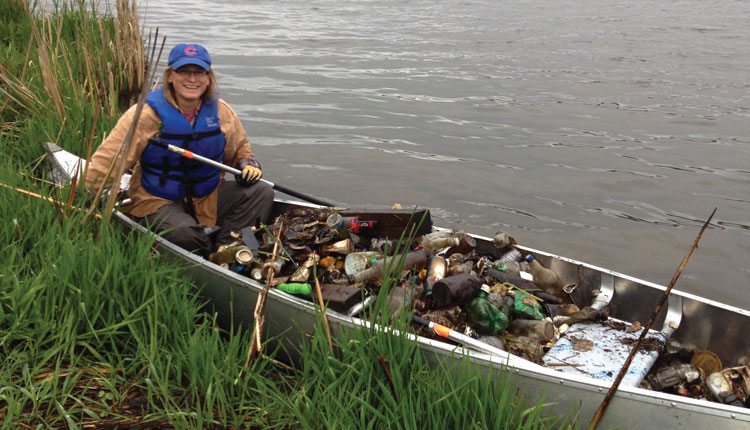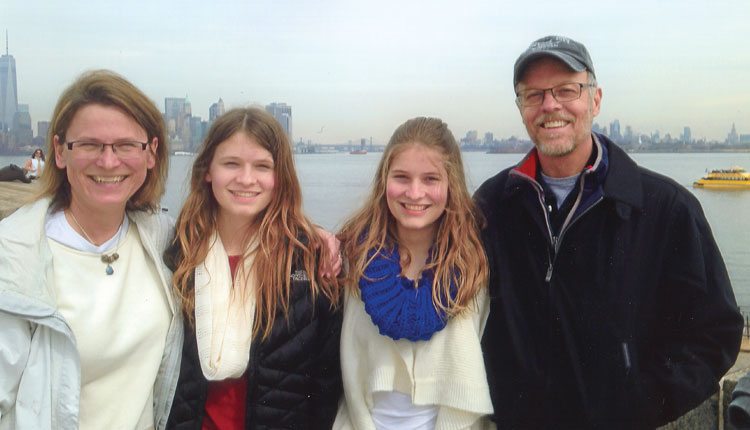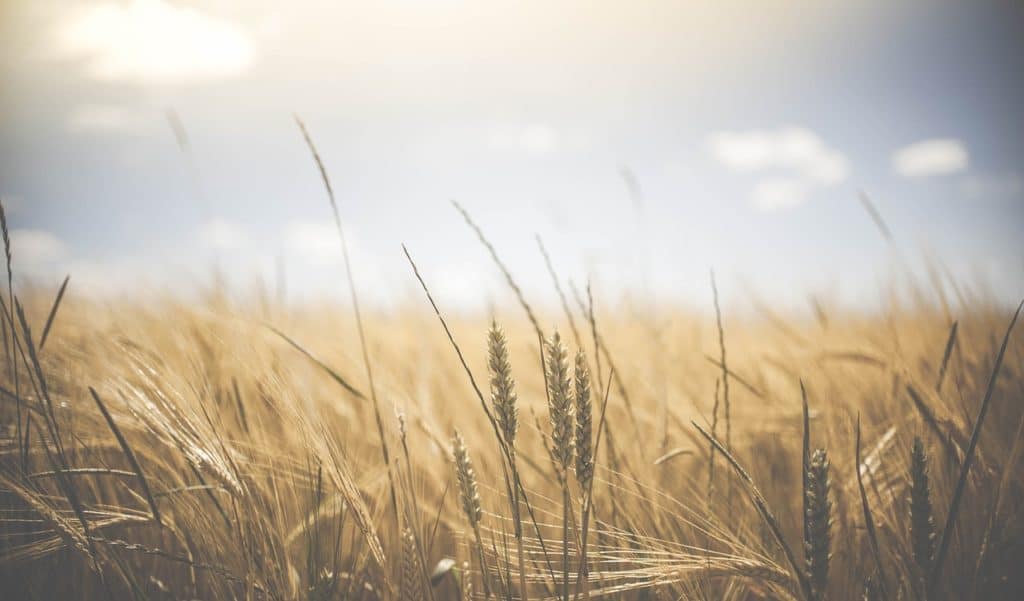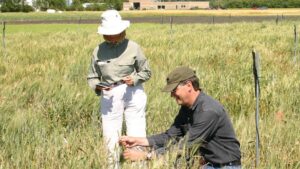She may be an accidental entomologist, but this scientist’s new leading role in DuPont Pioneer’s Hybrid Wheat Program is no accident. When it comes to trait characterization and development, Laura Higgins is a force to be reckoned with.
It was an inauspicious beginning. Laura Higgins, now a leading research scientist and entomologist in her 24th year at DuPont Pioneer, did not grow up playing with bugs; in fact, her first insect memory could have nudged her off the entomology path altogether.
“I was running through my mom’s sweet corn patch and an enormous bug, the size of a Volkswagen beetle, went into my mouth, and I swallowed it,” she says. “I remember being completely horrified. I spent the rest of the day in my room crying and waiting for death. If only somebody had told me that a large proportion of the world’s population uses insects for food, then I could have been more at ease with the whole incident.”
All of that changed in 1992. After leaving her home state of Ohio and her position as an IBP beef merchandiser in Nebraska, Higgins answered an ad for part-time employment with Pioneer Hi-Bred International in Johnston, Iowa. A couple of research projects later, she chanced upon a summer project with a group of Pioneer entomologists in 1993.
“I ran into people, almost by accident, who worked in that field,” Higgins says. “They were so passionate, so excited and so driven about the good they could do in the world. It was absolutely contagious; you couldn’t help but be inspired by what they were working on. I am an accidental entomologist. I’m probably an accidental scientist.”
Already armed with a Bachelor of Science in agriculture, Higgins hit the books at Iowa State University, taking an entomology course so she could talk the talk and walk the walk with her colleagues. Once more inspired by the people around her, Higgins completed a Master of Science while working full time.
A few years later, driven by her desire to contribute at a higher level to the entomology field and an innate love of learning (plus some friendly prodding by her academic contacts), Higgins fit more studies around regular work duties, a growing family and community commitments to complete her doctorate.
That love of learning would carry her far. Higgins was often offered projects with steep learning curves, on which she thrived. It wasn’t always easy, she says, and balancing work and family meant walking a fine line, but support and guidance from informal mentors and colleagues helped smooth her career path.
“These were people who intrinsically cared about my future, gave me good advice and could help me see past the near-term struggles for the long-term benefits,” she says.
Hybrid Wheat Leader
Nearly 24 years after answering that fortuitous ad, Higgins’ passion for entomology and learning is being directed toward DuPont Pioneer’s Hybrid Wheat Program. As trait characterization and development hybrid wheat lead, she is responsible for the strategy and execution of trait characterization and development for the program.
“Wheat is one of the most important cereal grains in the world, and we have some tools in our toolbox these days that will allow us to make significant improvements in wheat yields,” Higgins says. “I’m excited about being part of a team that can move it forward. We have clear goals to deliver on, and I love execution that delivers grower value.”
Although working for Pioneer has afforded Higgins many challenging and fulfilling roles, such as research director for Insect Trait Development, program leader of the DuPont Agricultural Biotechnology Group and environmental safety leader for the Regulatory Science and Registration Group, she considers her position as the Optimum AcreMax implementation lead for the Trait Characterization and Development Group one of the high points in her career.
The project focused on developing an improved way to deploy refuge for Bt corn growers. Over-coming technical hurdles, in-depth research and a deep understanding of the relationships and biology of the insect and refuge function allowed the AcreMax team to take an integrated refuge approach for corn rootworm that hadn’t been brought forward in such detail before, Higgins says.
“It was a challenging project, but it was one we successfully accomplished,” she adds. “It delivered a great deal of value from an insect resistance management perspective as well as eased the complexity of IRM compliance for the grower. It was very much based on the research our team developed over the years, and it was gratifying to bring it to market.”
Stepping through Pioneer’s doors every day adds vitality to Higgins’ life, because she believes the research she carries out makes a difference.
“I get a tremendous amount of energy from coming to work every day,” she says. “Most of us walk in the door thinking we can change the world. That’s a very inspiring way to live your life.”
Developing technologies and strategies that enable growers to control insects in more effective, safer and more convenient ways is game changing.
“We’ve been competing with and trying to control insects for as long as we’ve been cultivating crops,” Higgins explains. “The challenges are real and they’re constant — as many tools as we develop for insect control, they figure a way to adapt. It’s a little bit of a chess game.”
Luckily, Higgins doesn’t have to go it alone when battling bugs. Input from colleagues, other experts, as well as contributions from scientists past help inform today’s research.
“The scientists of today stand on the shoulders of the scientists who came before us,” she says. “We’ll learn things that the people I’m hiring today will take even further. I love the iterative nature of science, and that’s what changes the world.”
Pay it Forward
If changing the world isn’t enough, changing lives happens to be another outlet for the entomologist.
As a member of the Science Center of Iowa’s (SCI) board of directors; a science, technology, engineering and math (STEM) mentor for many outreach programs; and a Girl Scout leader, Higgins serves as a role model for many burgeoning scientists, especially young girls. Last year, she received the inaugural SCI Girls in Science Scientist of the Year Award, which recognizes a local scientist who best exemplifies the organization’s goal to empower and equip girls in
science, technology, engineering and math.
“Girls need role models and mentors,” Higgins says. “They need to talk to and see someone who is involved in science as a career; then they can visualize themselves in that role.
“There are many ways we interact with the public as scientists, and it’s our responsibility not to simply give people a position on scientific topics, but to help mentor the public about how to find answers to their own questions related to scientific issues.”
According to Higgins, living an inspired life is simple: surround yourself with people who are passionate about what they do, and put your time where you find the most value.
Most importantly, take time to immerse yourself in science and nature.
“To me the fabulous thing about science, whether you’re a scientist or you work outside a science-related field, is the amazing sense of wonder that exists in the world,” she says. “You see kids get excited all the time about things they see outside. As scientists, and as adults, we are continually exposed to this ‘wow factor’ that’s all around us every day in biology and in our environment.
“If there’s one thing to take away from science, it’s to remember to be amazed. We’re surrounded by things yet to be discovered. Sometimes we get too fixated on other things and forget to appreciate how amazing nature is.”














